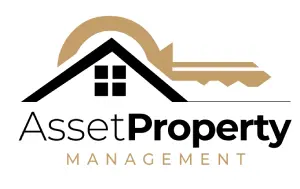A Complete Guide to Subletting Rules in New Zealand
As the warm embrace of summer draws near, most of us are daydreaming about those long-awaited vacation adventures. However, for renters, this season typically means the need for some creative housing options. The changing tides of the rental scene are something to keep an eye on, whether it’s winding up a lease ahead of schedule or subletting your house while you go on holiday adventures. It’s time to brush up on your knowledge of subletting, and we’re here to help you do it in a relaxed and simple manner.
So imagine this: the sun is shining, the beach is calling your name, and you can’t wait to pack your belongings and leave your humble apartment. But, with all of the recent developments in the rental world, there’s no better time than the present to learn the ins and outs of subletting. We’re here to help you understand the process and get answers to any questions you may have.
Have you ever been curious about the details of subletting? How does it function? What are the musts and must-nots? Are there any legal stumbling blocks to overcome? So don’t worry; we’ve got you covered. We’re ready to dig into the world of subletting, from choosing the appropriate subletter to comprehending your lease agreement and ensuring everything runs well. After all, your summer plans are too important to be overshadowed by housing problems.
Subletting has been a popular property arrangement in recent years, particularly in New Zealand. If you have to put it across simply, it allows individuals to temporarily quit their property and rent it out to someone else, allowing them to return to their house once the sublease agreement has expired. Subletting is frequently confused with “assignment,” which is a more permanent way for renters to replace themselves in a tenancy arrangement. This post dives into the concept of subletting as well as the legislation and regulations that regulate it in New Zealand.
What is Subletting?
Subletting, as we often hear, is also called subleasing. It is a flexible housing arrangement that can benefit both tenants and landlords. It allows tenants to leave their rented property for a set period of time. The original tenant, known as the sublessor, rents out part or all of the property to a new tenant, known as the sublessee, under a subletting agreement. The sublessee assumes the same obligations and rights as the original renter during the agreed-upon sublease duration.
The Subletting Laws in New Zealand
The rental environment in New Zealand has undergone considerable modifications in order to modernise its rental legislation. The Residential Tenancies Amendment Act 2020, which went into effect in August 2020, is one of the most significant changes to these rules. This amendment gave tenants the right to sublet their tenancy arrangement unless the rental agreement expressly states otherwise. However, both landlords and tenants have to follow certain norms and duties. Some are discussed here :
Consent from the Landlord:The first and most important step is to seek permission from the landlord. Tenants must request and acquire written authorisation from the property owner before subletting. Landlords have the right to refuse the request provided they have good reason to do so.
Subletting Agreement: It is very important to have a formal subletting agreement. This agreement should include the sublease terms, such as the sublet duration, rent amount, and any special regulations or requirements. To ensure compliance, it is advised that you utilise the standard subletting agreement given by the New Zealand government.
Sublessee Responsibilities: The sublessee should understand that they are subject to the same responsibilities and liabilities as the original renter. This involves paying the prescribed rent according to property restrictions and adhering to the terms that were discussed while subletting.
Liability: The property is ultimately responsible for the original tenant or sublessor. If the sublessee fails to meet their commitments, the sublessor is accountable for any tenancy agreement violations.
The Tribunal: Subletting disputes can be brought to the Tenancy Tribunal, which serves as a tenant dispute resolution agency.
Termination of Arrangement: The sublessee must leave the property once the agreement concludes.
Things to Think About When Subletting
When travelling on vacation, subletting might be a practical way to save money. It’s especially popular among students who prefer to spend their summer break at home. This financially viable solution assures that you can move out temporarily while returning to the property after the sublease expires. However, there are a few important aspects to consider first:
- If you want to sublet your apartment, the first thing you should do is go over your lease. If subletting is not permitted, it will be explicitly noted in your contract. If nothing is mentioned, contact the landlord to address your problem. If you proceed with a sublet without the landlord’s consent, you could face a $ 1,500 fine; this should be avoided at all times.
- You will stay on the tenancy agreement as the original tenant if you sublet. However, you will also become the subtenant’s ‘landlord’ at the same time. This means that it is your obligation to guarantee that rent is paid on time and that the property is kept clean to a fair standard. That is why identifying the proper candidate is all the more important. Finding a trustworthy and reliable person to take over the lease can provide peace of mind for both you and your landlord.
- Once the prospective candidate has been chosen, a good property manager should do the required tenant screening to verify the property is in excellent hands. Among these are:
- Obtaining references from past landlords and contacting them directly.
- Providing confirmation of the candidate’s identification.
- Performing a credit check to guarantee that there are no financial risks.
- Requesting permission to obtain a Criminal Record Check from the Ministry of Justice to make sure the candidate has good character.
Winding Up
In conclusion, subletting is a practical short-term rental alternative in New Zealand that provides tenants with flexibility and landlords with income stability. It differs from the assignment in that it allows the original renter to return to their property after the sublet period ends. It is critical to understand and follow the regulations and duties established in New Zealand’s rental laws to ensure a pleasant subletting experience. If these recommendations are followed, tenants and landlords may make educated judgements and defend their rights during the subletting process.




